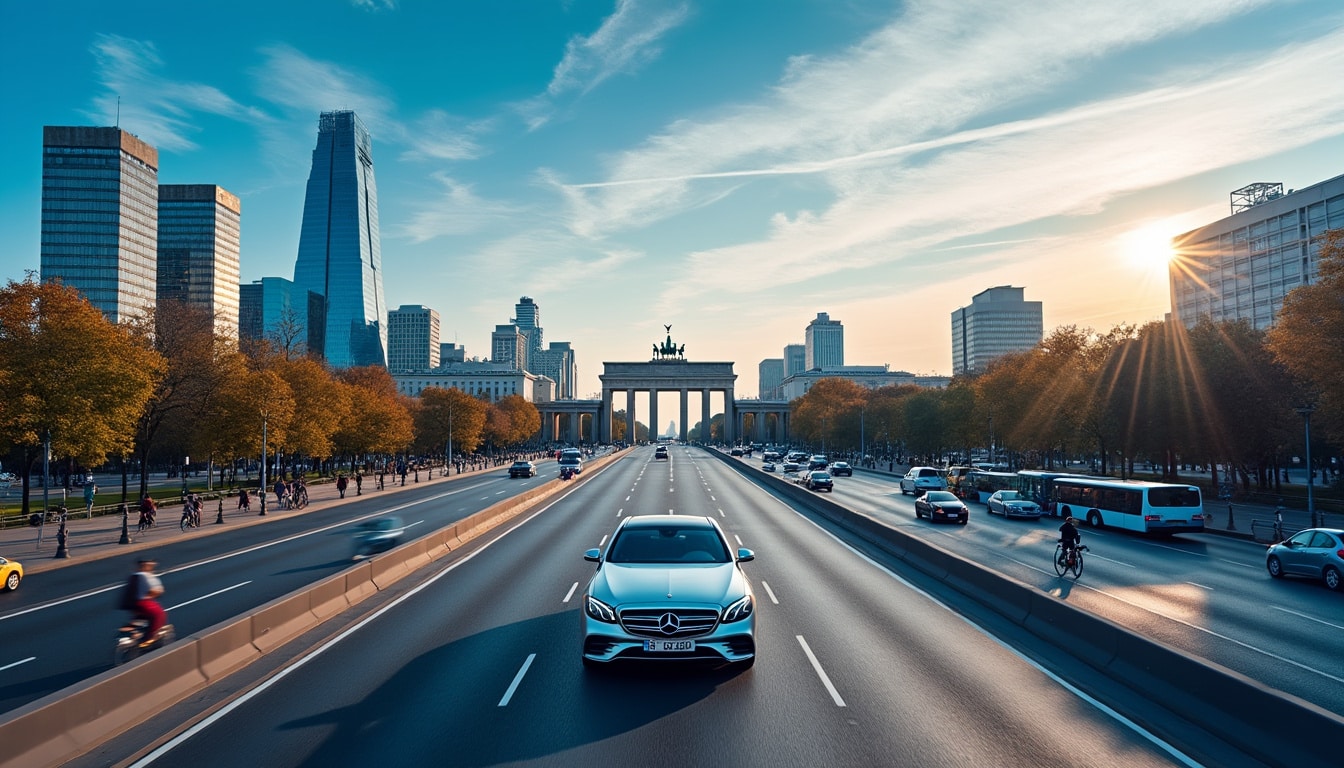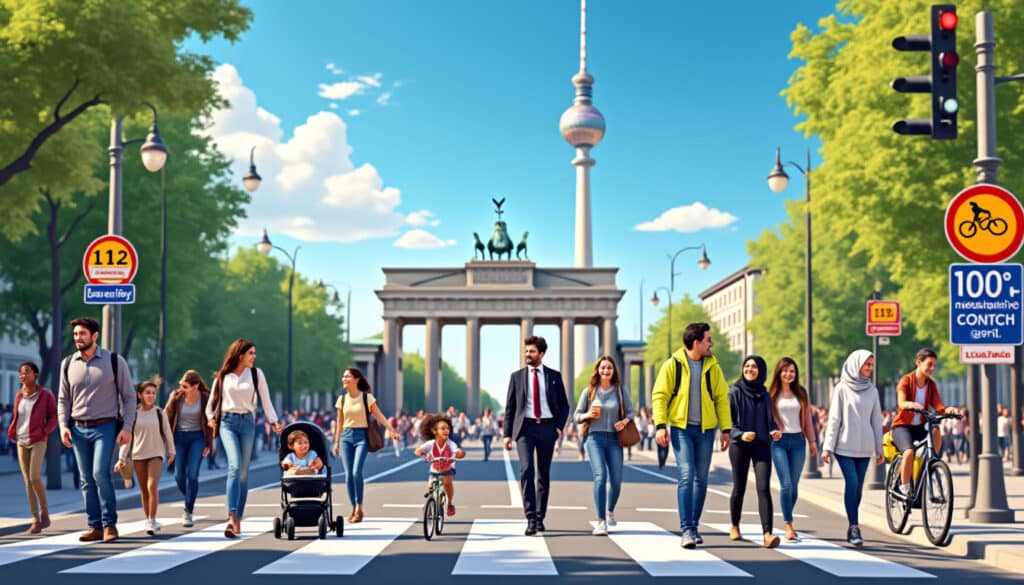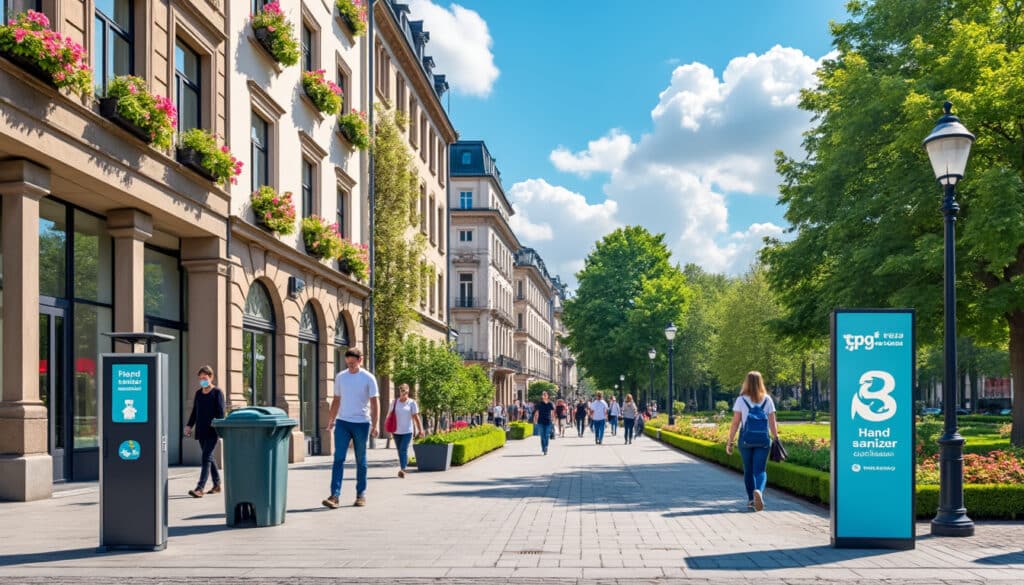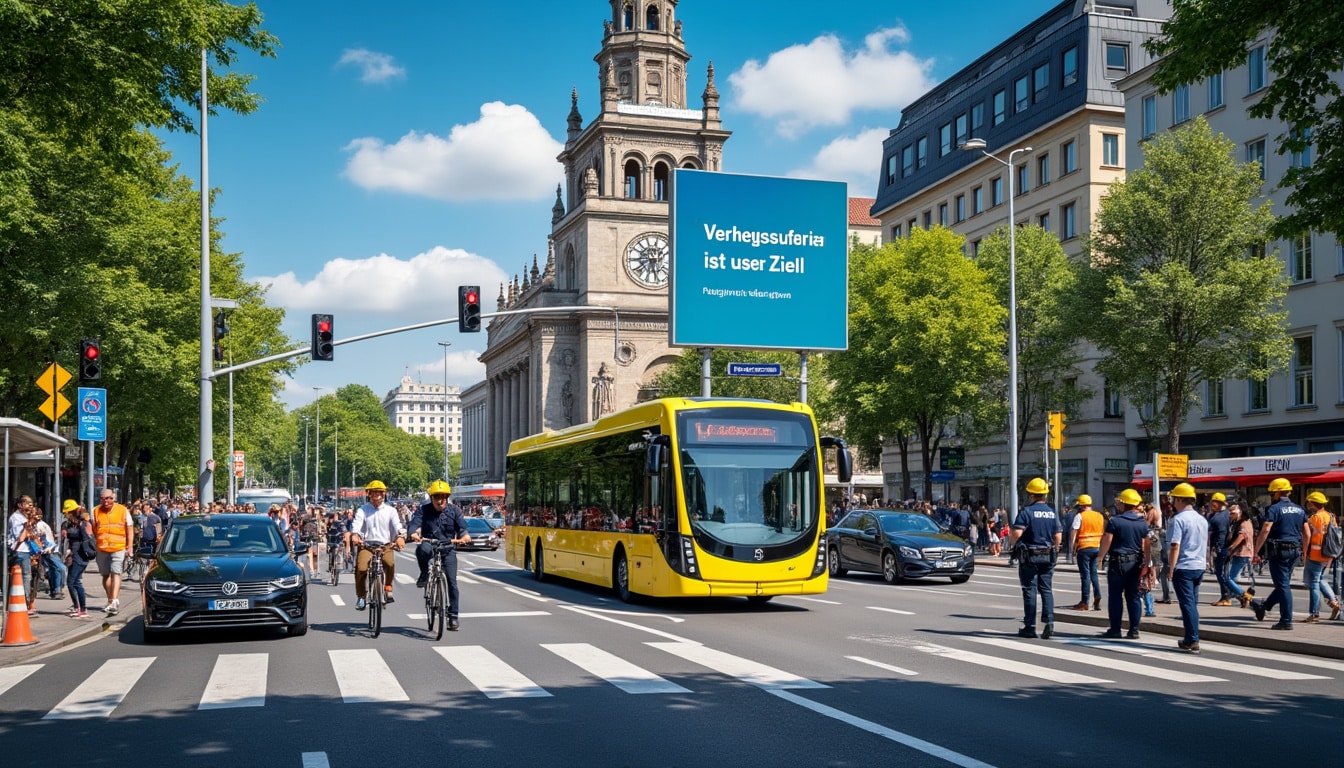Berlin’s vibrant urban landscape may seem daunting at first glance, but the city’s modern transport network offers a reliable and secure way for residents and visitors alike to navigate its bustling streets. As the capital of Germany continues to grow, so does the emphasis on transport safety, ensuring that Berlin remains a safe destination for millions of daily commuters and tourists. With measures in place and continuous improvements underway, understanding the nuances of transport safety in Berlin can significantly enhance both daily commutes and exploration efforts.
Understanding Berlin’s Transport Infrastructure
Berlin’s transport network is a remarkable blend of efficiency and innovation, catering to over 4 million residents and tens of millions of visitors each year. At the heart of this complex system is the Berlin Transport Authority, which collaborates with other key players such as BVG, Deutsche Bahn, and even international entities like Siemens Mobility. Together, they ensure seamless connectivity across buses, trams, trains, and the U-Bahn.
Safety on public transport is a priority. With the introduction of smart technology through platforms like Trafi and the adoption of Mobility as a Service (MaaS), Berlin aims to provide safer and more convenient travel options. The focus is not just on physical safety but also on enhancing user experience and confidence while traveling. Berlin’s renowned safety initiatives, like the Urban Transport Safety Initiative, continue to evolve, aiming to reduce risks associated with travel while maintaining efficiency.
| Transport Type | Operator | Primary Safety Measures |
|---|---|---|
| U-Bahn | BVG | Security personnel, CCTV, regular patrols |
| S-Bahn | Deutsche Bahn | Dedicated security, real-time monitoring |
| Trams | BVG | Frequent checks, emergency intercoms |
| Buses | BVG | Surveillance cameras, driver training |
Moreover, Berlin’s commitment to enhancing road safety is exemplified by the “Road Safety Program 2030”. This ambitious project, anticipated to be fully launched in 2025, aims for Vision Zero—ultimately reducing road fatalities to zero. Efforts include reevaluating the Berlin Cycling Plan, introducing robust pedestrian road-crossing initiatives, and improving school route safety. As recent statistics show, the struggle against fatal accidents is ongoing, with 55 road deaths reported in the last year alone. The commitment to safety is pivotal for Berlin’s future.

Public Transport Security Measures
Safety in Berlin’s public transport system is maintained through a combination of advanced technology, proactive measures, and community engagement. The city employs a multifaceted approach to cultivate a secure environment for everyone traveling within its limits. BVG, Deutsche Bahn, and SBB play significant roles in implementing security strategies on their respective networks, while keeping the user-friendly aspect intact.
One of the key features is the deployment of CCTV and security personnel throughout stations and vehicles. This not only acts as a deterrent for potential criminals but also boosts passengers’ sense of safety. The constant presence of visible surveillance and real-time monitoring allows for rapid response to incidents, ensuring minimum disruption. This proactive approach is further demonstrated by Siemens Mobility’s innovative security solutions across Berlin’s transport network.
Security personnel undergo thorough training emphasizing conflict resolution and customer service, ensuring that they can manage and ease tensions effectively. Moreover, emergency intercoms and informational boards enhance communication between passengers and authorities, further elevating the sense of security.
- 🛡️ Regular Security Patrols: Boost passengers’ sense of security.
- 📷 CCTV Installed: Ensures constant monitoring and deterrence.
- 📞 Emergency Intercoms: Accessible for immediate assistance.
- 🆘 Quick Response Teams: Swift action during emergencies.
Understanding how these measures function and contribute to an overall safer travel experience is essential. It highlights why Berlin’s public transport is often regarded as one of the safest in Europe.
Taxi and Rideshare Safety in Berlin
Those preferring taxi or rideshare options in Berlin can rely on a system built around safety and user satisfaction. Official taxis, easily recognizable with their “TAXI” signs, are operated by trusted companies ensuring rigorous safety standards. Additionally, rideshare platforms like CIRQ and FlixBus offer another layer of convenience with digitally tracked trips and driver verification, allowing for safer journeys.
However, it is still essential to take precautions:
- 📋 Verify Driver Details: Always confirm driver information before beginning a trip.
- 📱 Share Trip Details: Inform someone trusted about your route and estimated time of arrival.
- 💺 Opt for the Back Seat: A simple measure to ensure safety and privacy.
| Service Type | Safety Features | Recommendations |
|---|---|---|
| Taxi | Highly visible, GPS tracking, regulated fares | Use licensed taxis, plan routes in advance |
| Rideshare | Driver verification, trip sharing, real-time tracking | Check driver identity, share your trip |
These steps ensure that both residents and visitors experience a safe and pleasant journey. Trusting official resources and maintaining diligence enhances the reliability of these services.
Road Safety Initiatives and Programs in Berlin
As part of its comprehensive safety vision, Berlin has introduced several initiatives aimed at enhancing road safety. Central to these efforts is the “Road Safety Program 2030”. Announced by Transport Senator Ute Bonde, the initiative seeks a dramatic reduction in road fatalities, with a goal to achieve Vision Zero.
This program adopts a multifaceted approach, addressing several key areas:
- 🚸 School Routes Safety: Creating secure pathways for young pedestrians.
- 🚦 Pedestrian Crossings: Implementing advanced safety features at crosswalks.
- 🚲 Cycling Safety: Updating the Berlin Cycling Plan to cater to ever-growing cyclist numbers.
The program has been pivotal in improving not only current safety levels but also planning for future demands, significantly reducing risks through better infrastructure and community involvement. To delve deeper into Berlin’s safety measures, explore Berlin Safety Tips.
While efforts persist, the importance of collective vigilance is not undermined. By engaging with community and technological resources, these initiatives ensure a safer experience for everyone.
The Vision Zero Objective: A Safer Future
Berlin’s pursuit of Vision Zero, the ambition to eliminate all road fatalities and severe injuries, emphasizes a future where transport safety transcends mere statistics. By 2030, plans to integrate advanced data analytics, community feedback, and infrastructural upgrades aim to cultivate a transport environment without risks.
Efforts form an ecosystem that encourages safe driving and traveling practices among all road users. From public campaigns to educational programs, engaging both citizens and policymakers remains crucial in realizing Vision Zero. Learn more about safety for travelers here and be a part of this transformative journey.
FAQs on Transport Safety in Berlin
- Is public transport in Berlin safe for tourists?
Yes, public transport is generally safe and very efficient. Adhering to basic precautions like securing belongings and being aware of surroundings can enhance personal safety. For more information, explore safety tips related to pickpocketing and theft here.
- Are taxis and rideshare services reliable in Berlin?
Taxis and rideshare options are reliable and incorporate various safety measures. It is advisable to use officially recognized services and maintain communication with trusted contacts during trips.
- What initiatives are in place to improve pedestrian safety?
Programs like the “Road Safety Program 2030” emphasize pedestrian crossing improvements and secure routes, particularly around schools. These efforts help to reduce risks significantly.
- Does Berlin offer resources for travelers regarding safety?
Yes, several resources provide travelers with comprehensive safety tips and locally relevant information. Discover more via these safety tips for Berlin.
- How does Berlin compare to other major European cities regarding transport safety?
Berlin boasts a robust and highly regarded transport safety record, comparable to major European cities. The city’s continuous improvements and safety programs further emphasize its commitment to secure travel.

Planning an adventurous trip to Berlin? Secure your journey with our comprehensive safety guide, making sure you traverse this urban hub with confidence. Berlin, a city pulsating with energy, offers an eclectic mix of history, culture, and nightlife. Yet, navigating…

Cleanliness and hygiene in Berlin
Berlin, a city known for its vibrant culture and dynamic lifestyle, places a significant emphasis on cleanliness and hygiene as the cornerstone of public well-being. With rapid urban development, maintaining a pristine environment in Berlin is more crucial than ever.…

Pickpocketing and theft in Berlin
Berlin, a dynamic city that has long been a magnet for history buffs, culture enthusiasts, and nightlife seekers, draws millions of visitors each year with its iconic landmarks, vibrant scene, and diverse neighborhoods. Yet, as with any major metropolitan area,…

Protests and social unrest in Berlin
In recent years, Berlin has seen a surge in protests and social unrest, reflecting a complex tapestry of political, social, and economic frustrations. From controversial asylum policies to resistance against far-right movements, the streets of Berlin have become a vibrant…

Safety in Berlin for travelers from different countries
Berlin, the dynamic capital of Germany, beckons travelers with its rich tapestry of history, culture, and avant-garde arts. For those planning to explore this cosmopolitan city, safety is a paramount concern. The bustling streets are home to a captivating mix…


